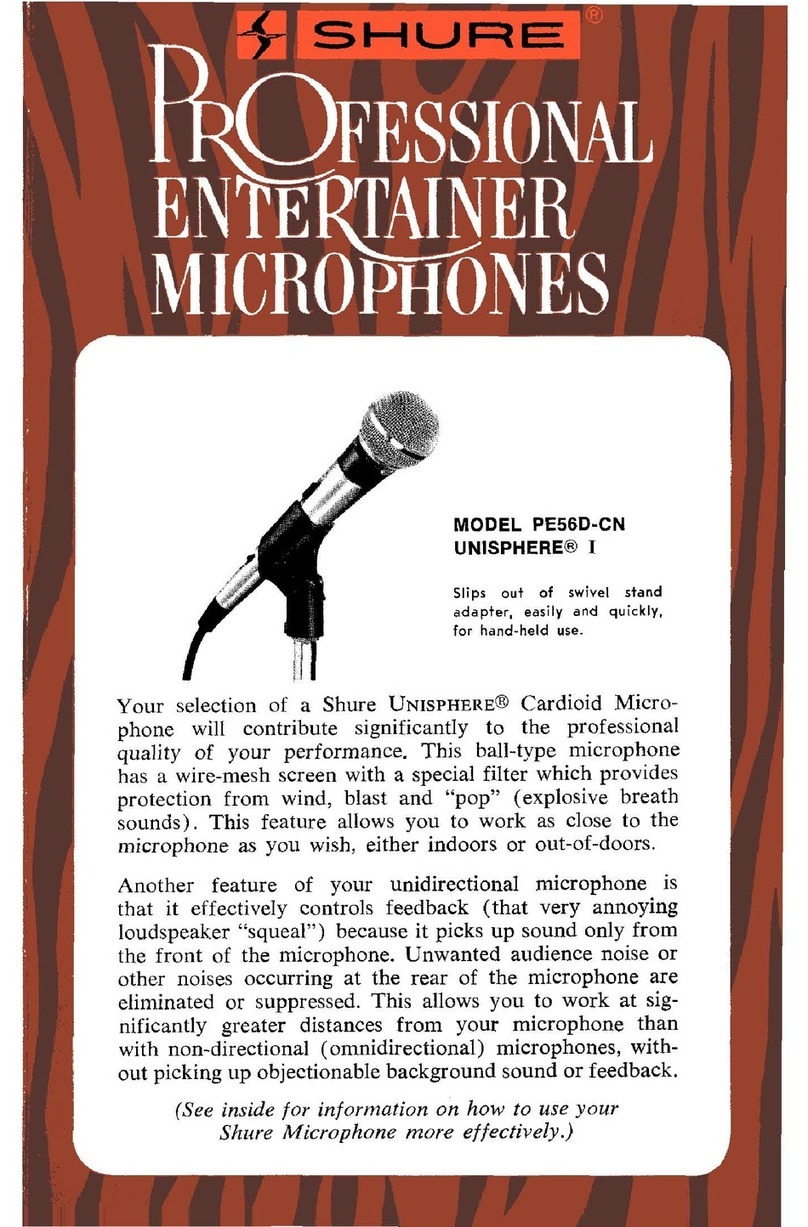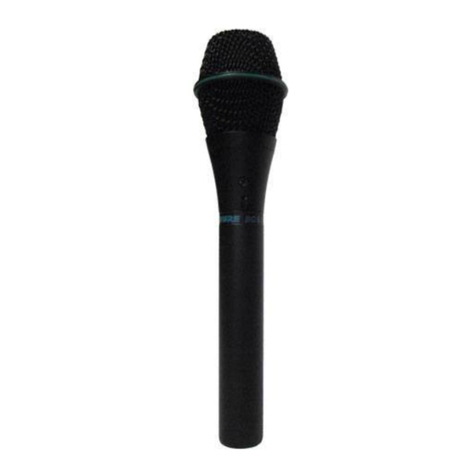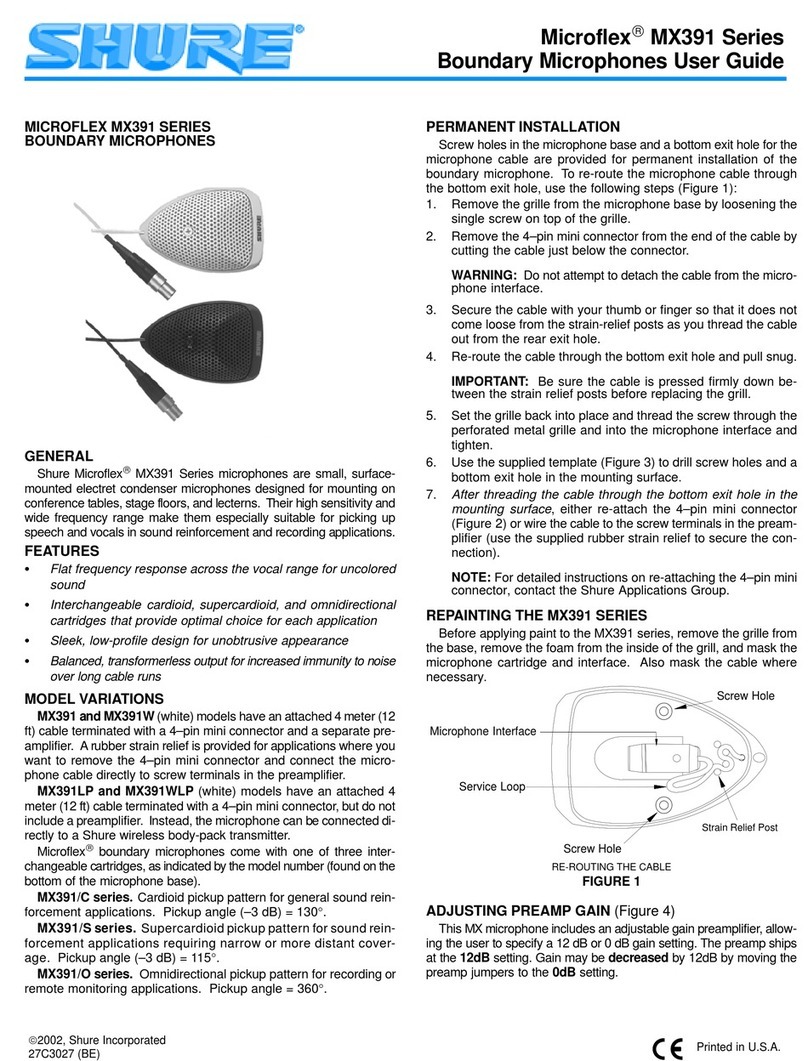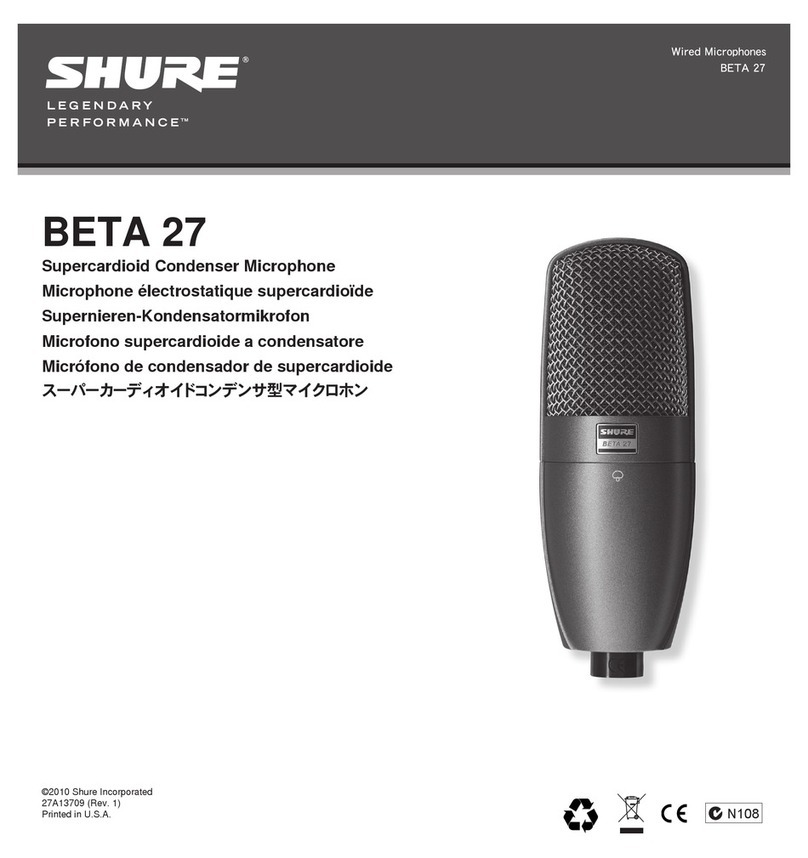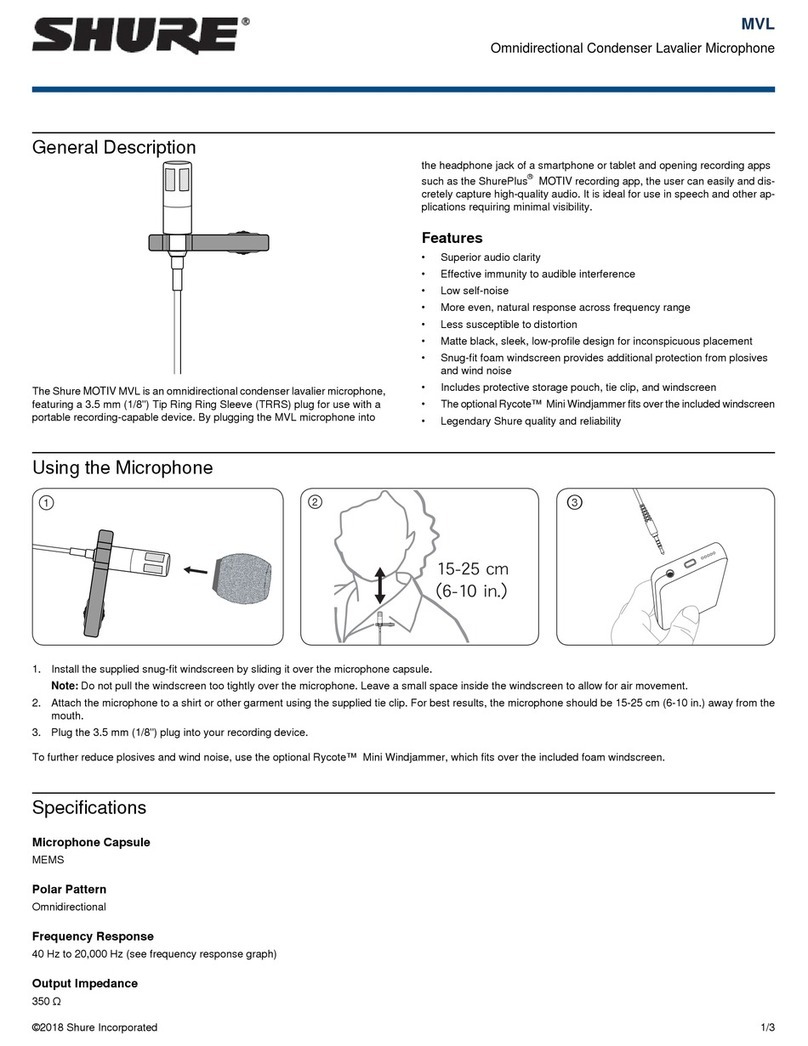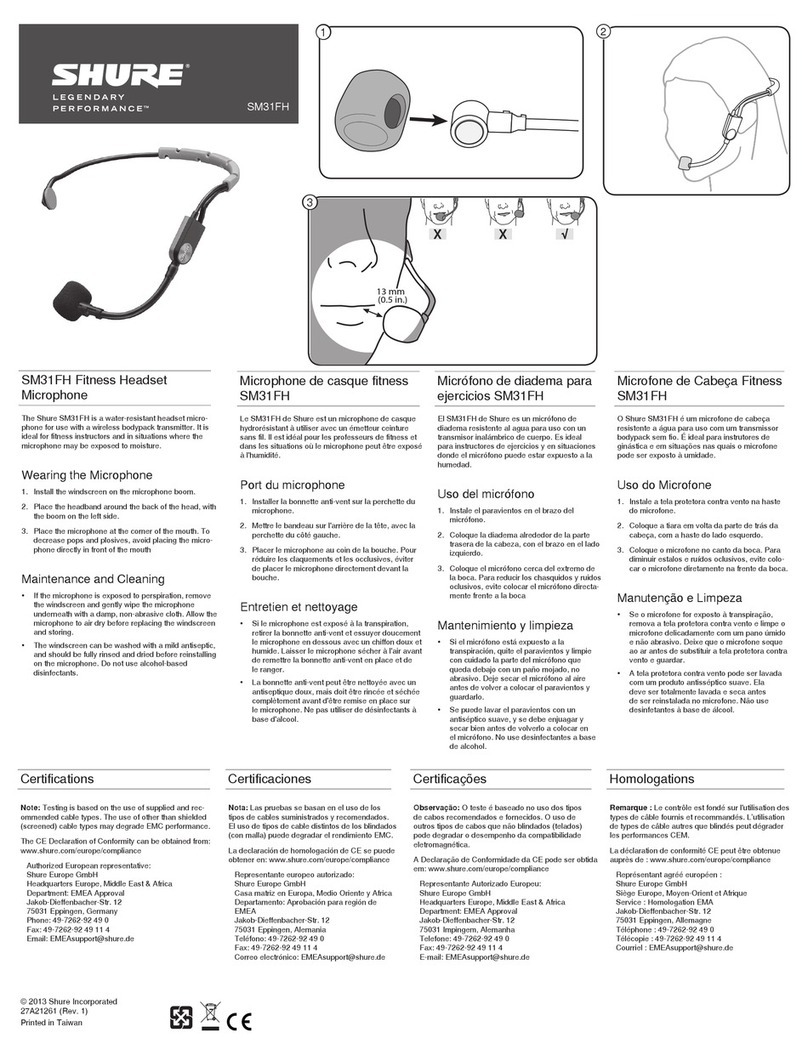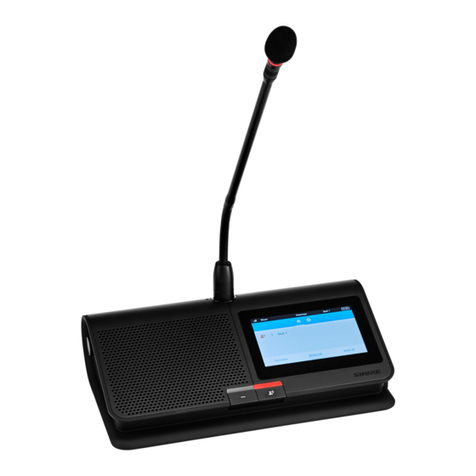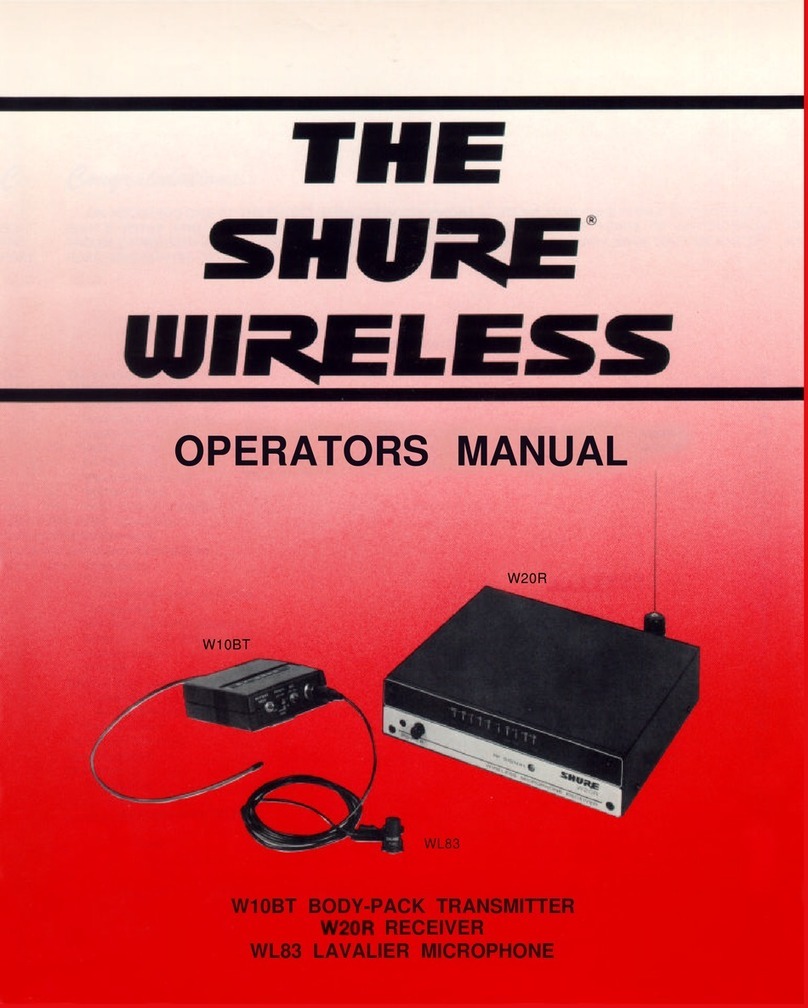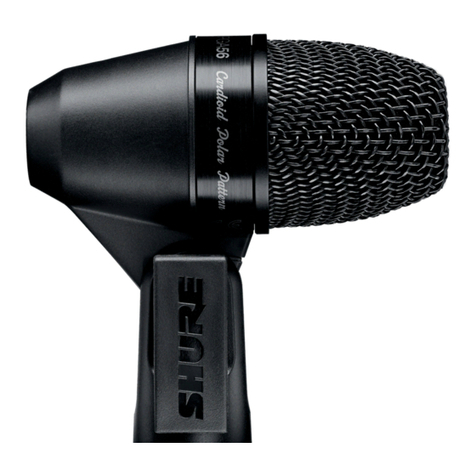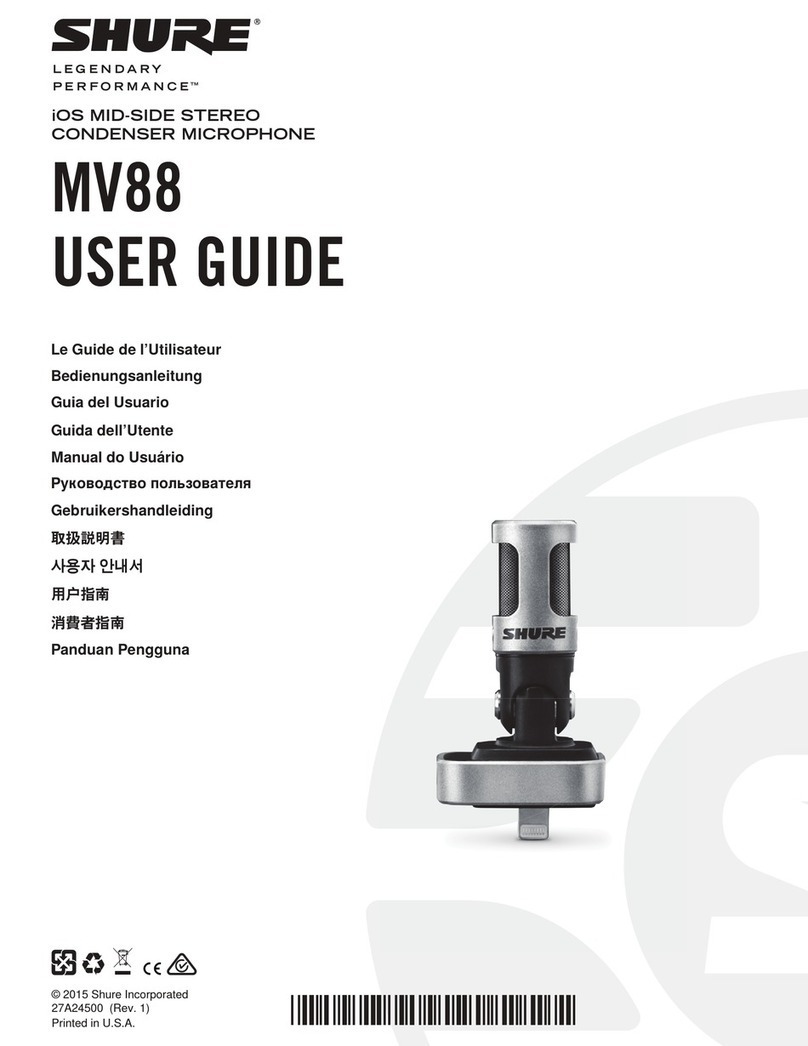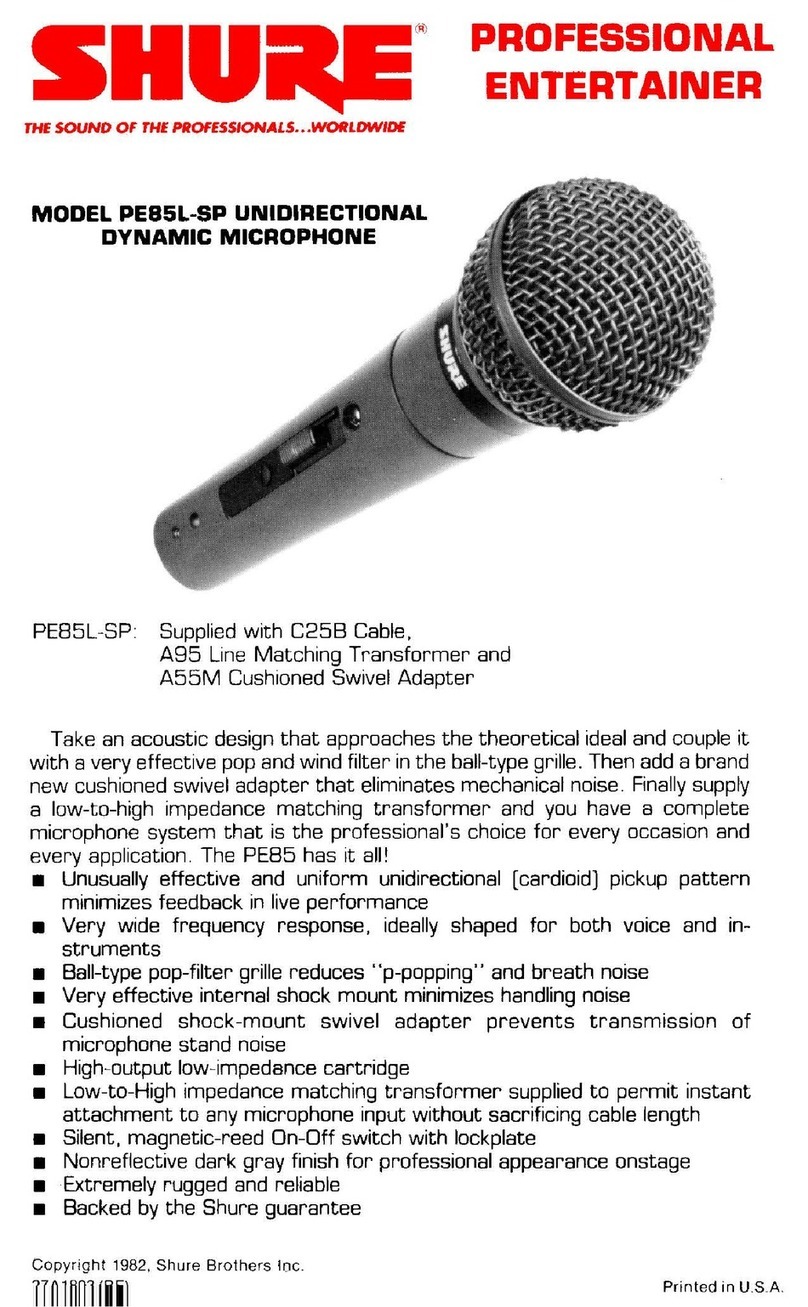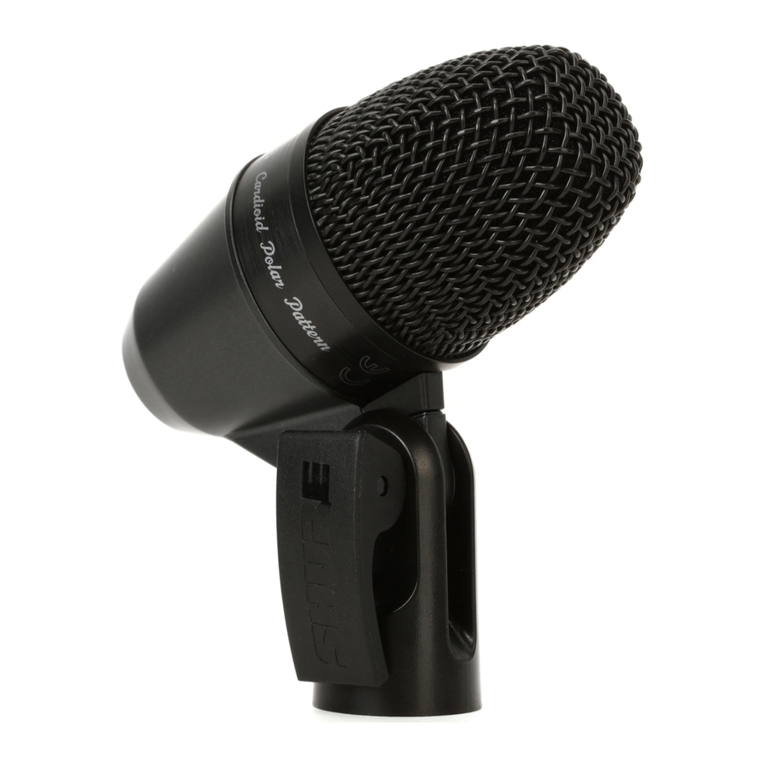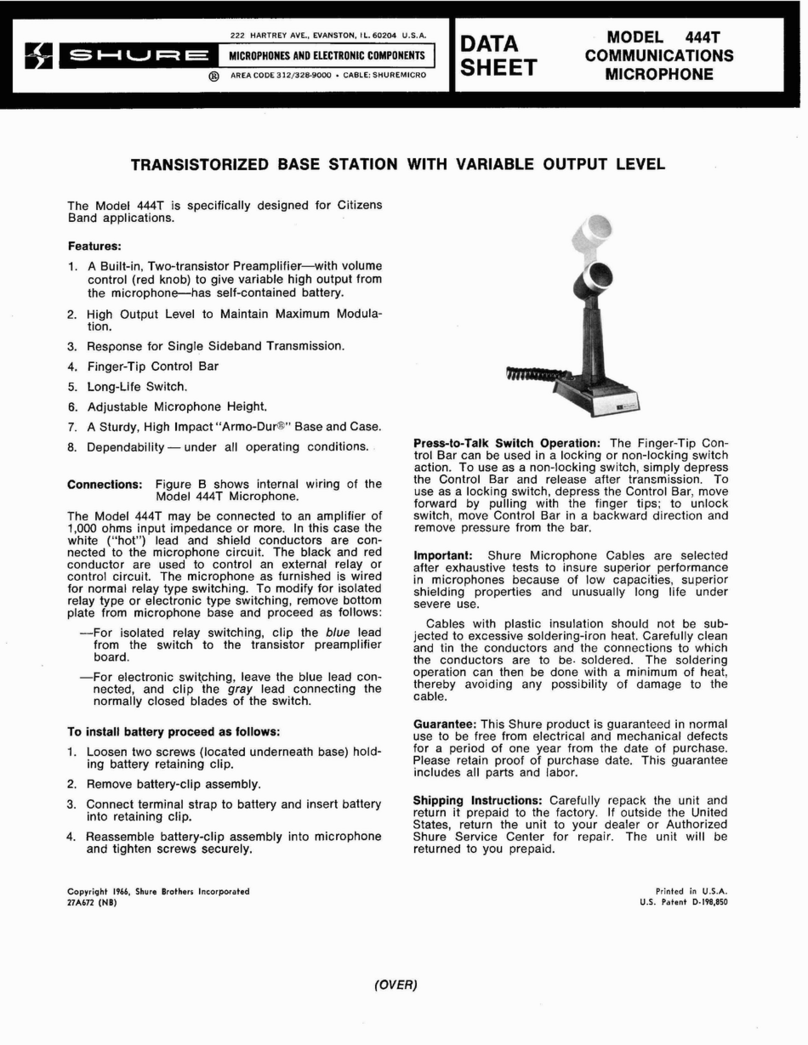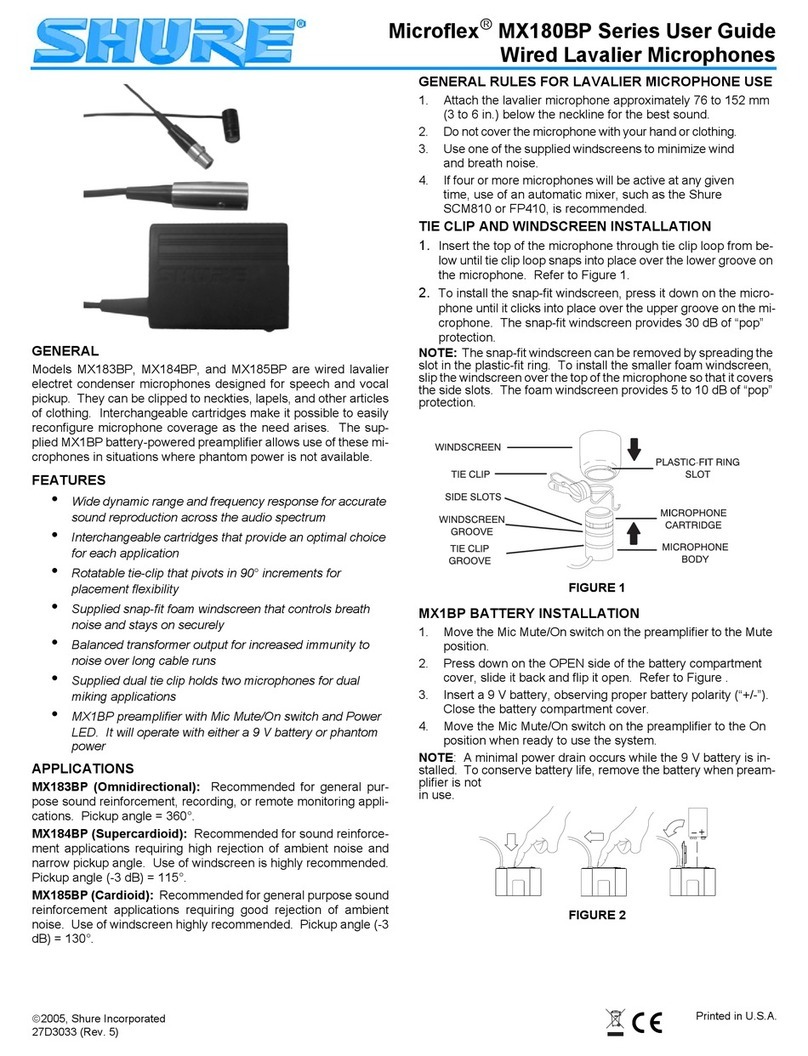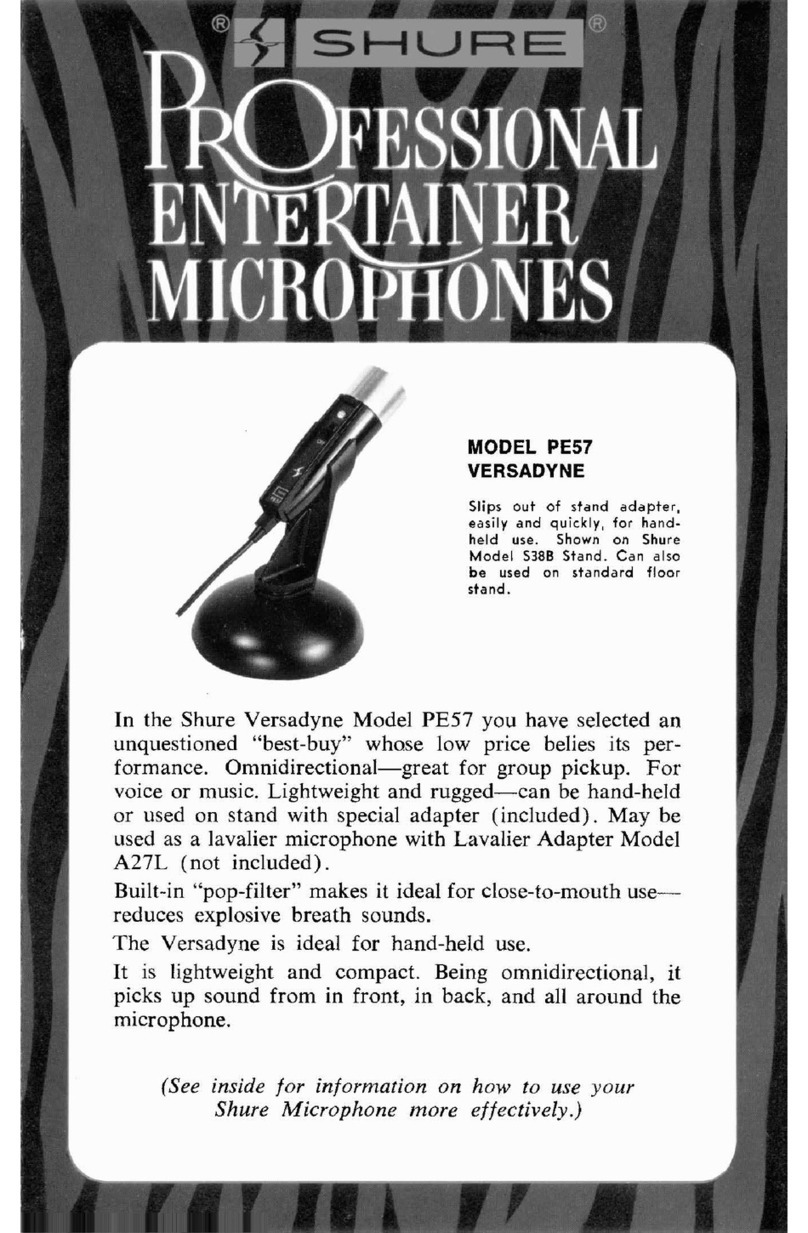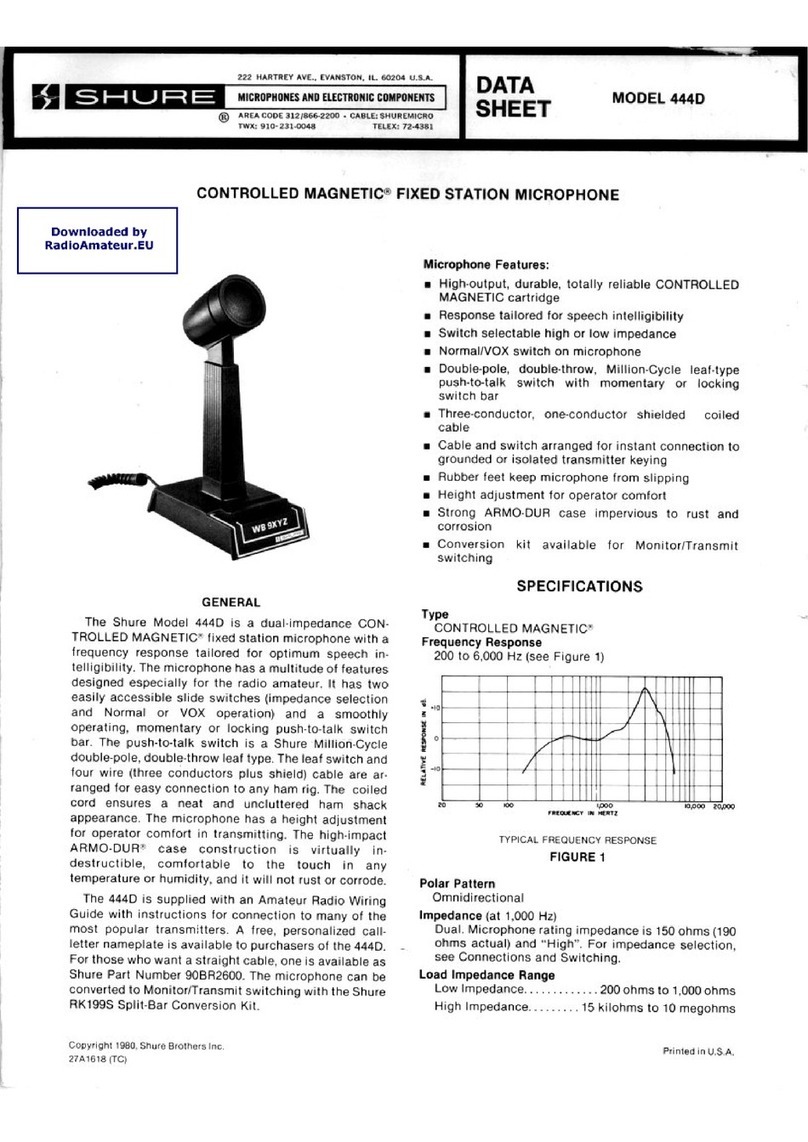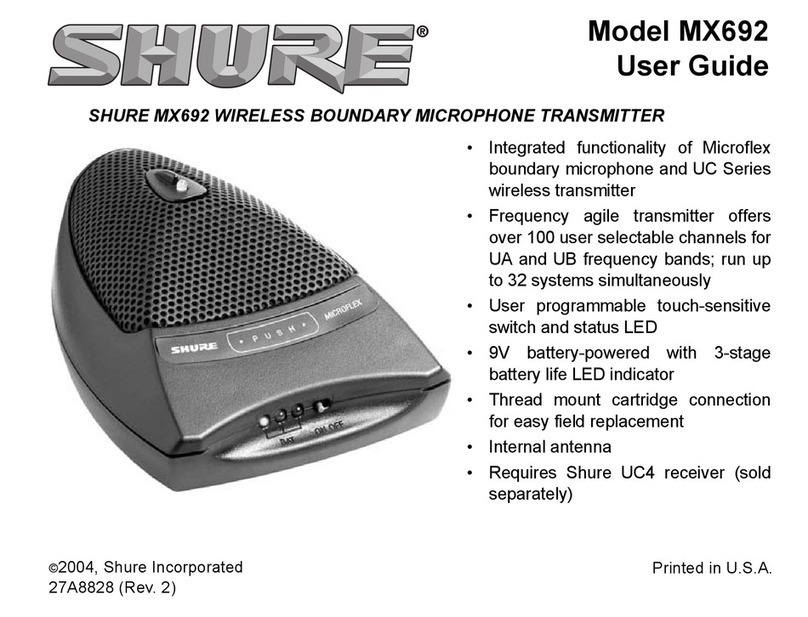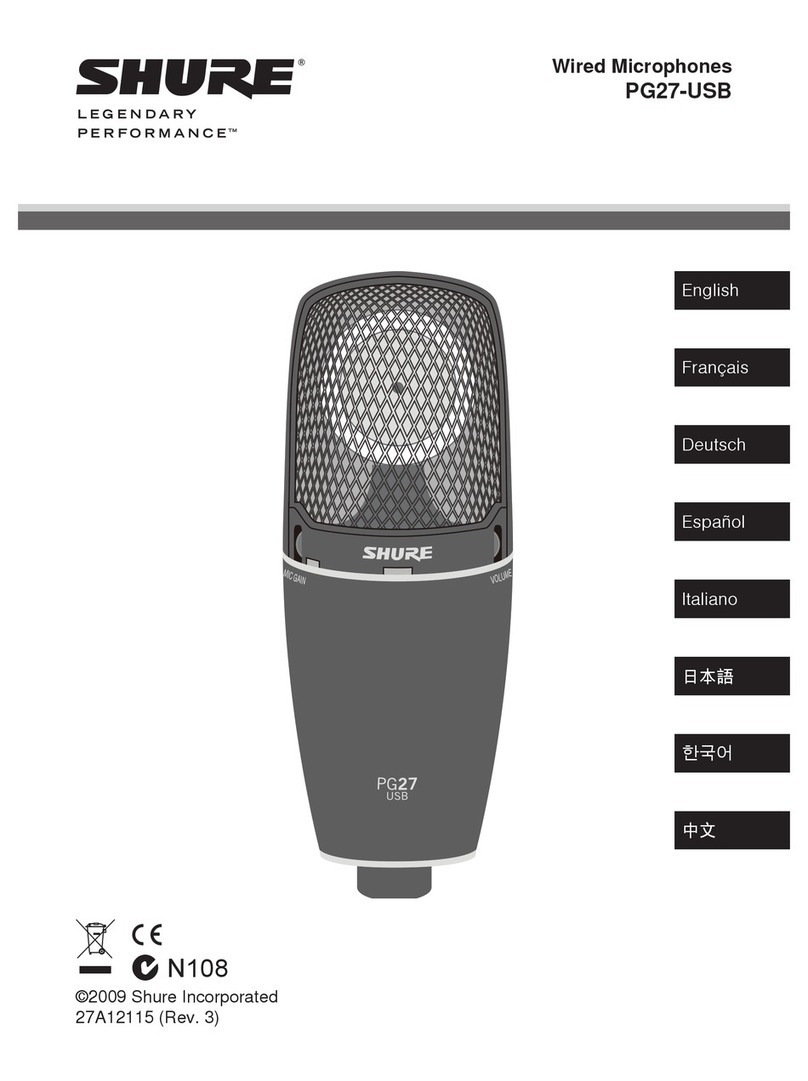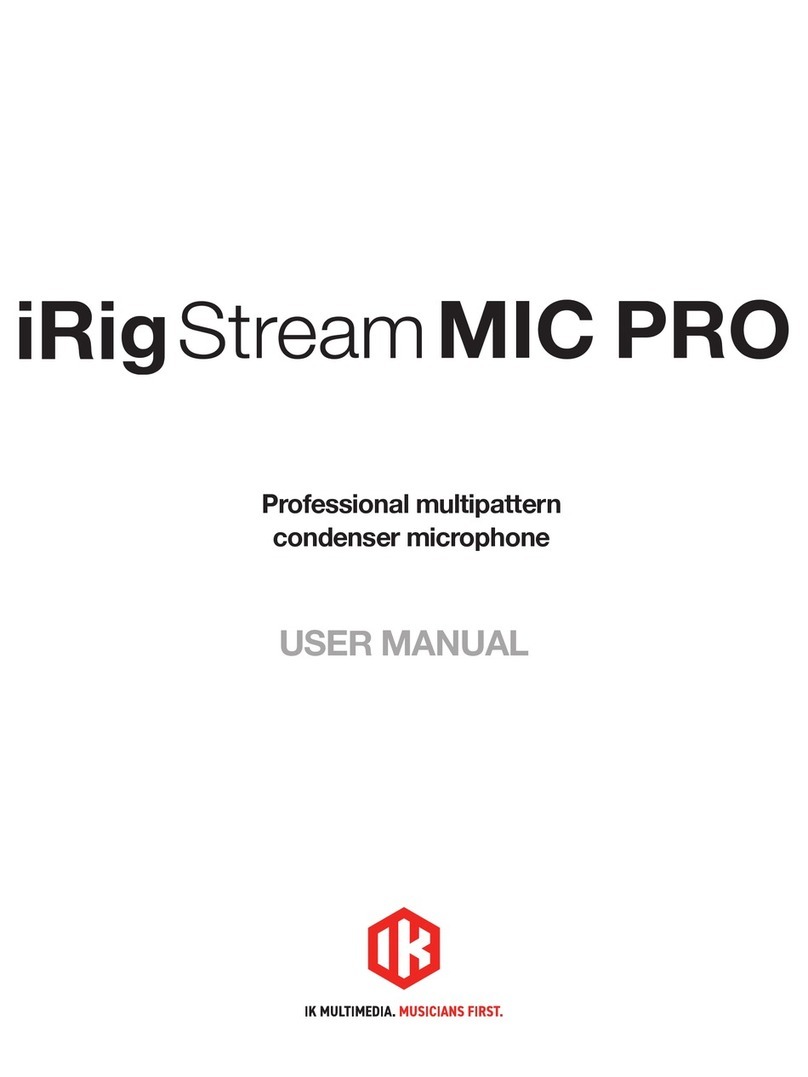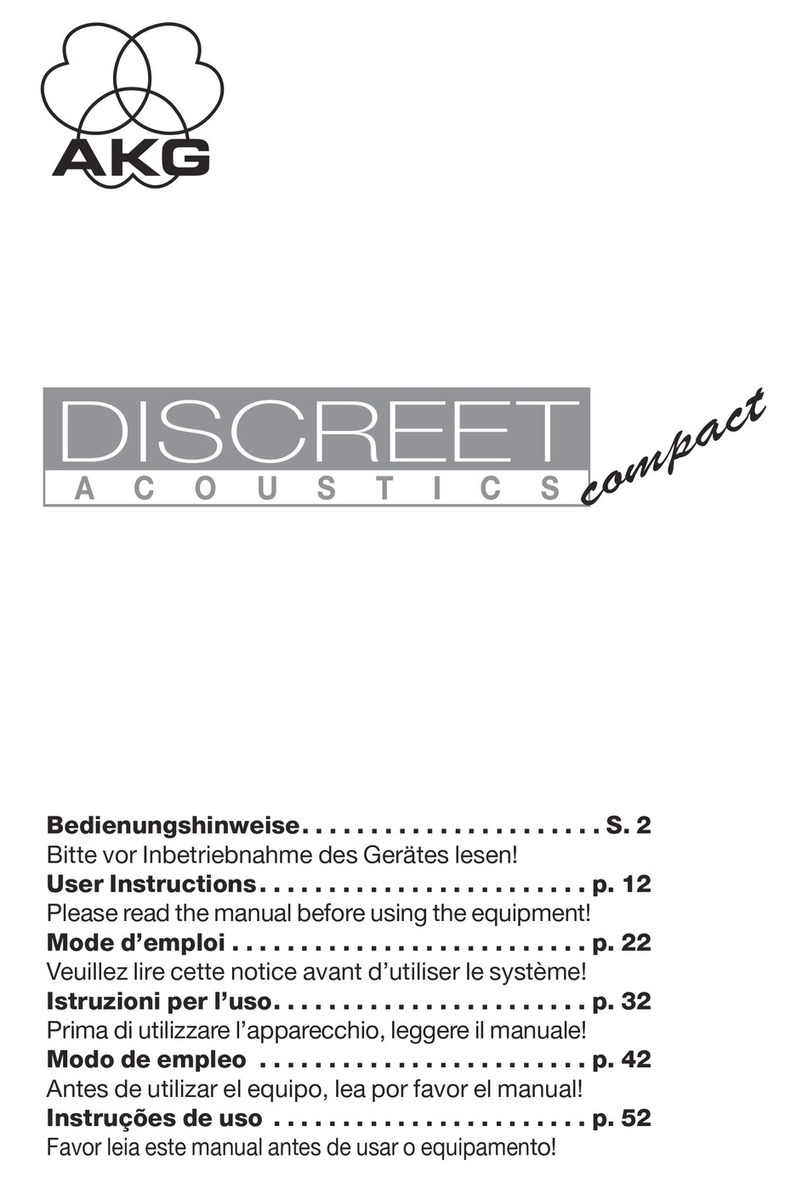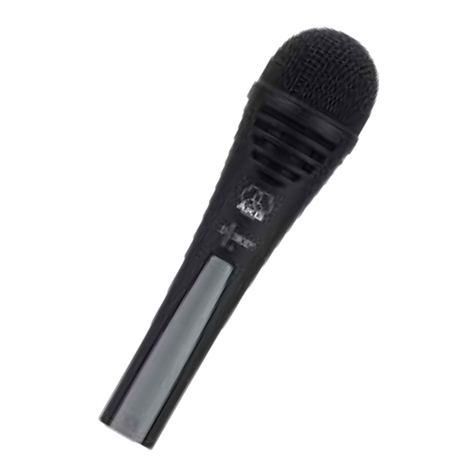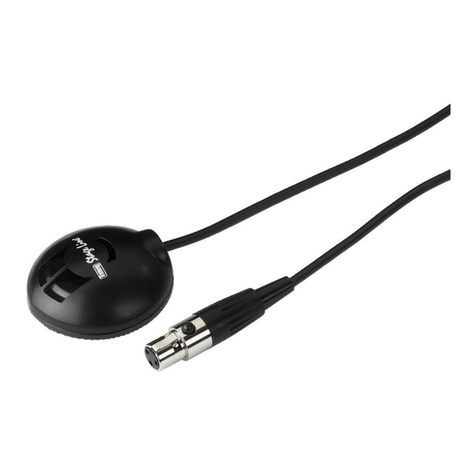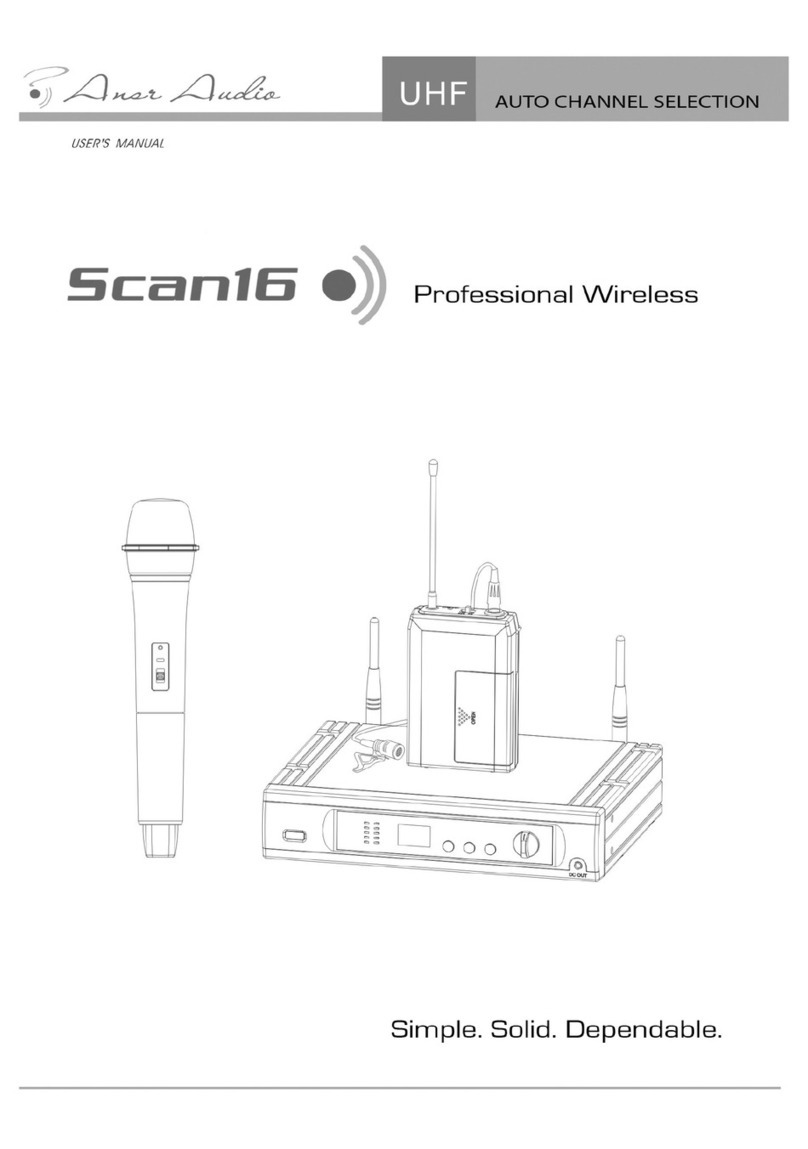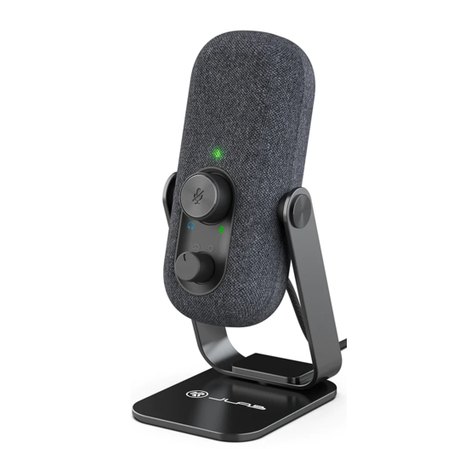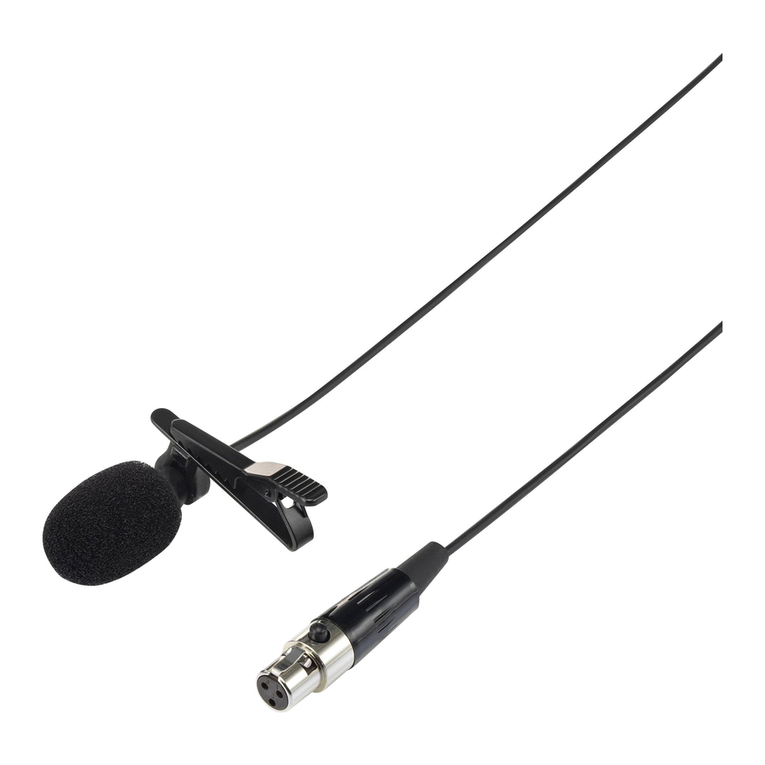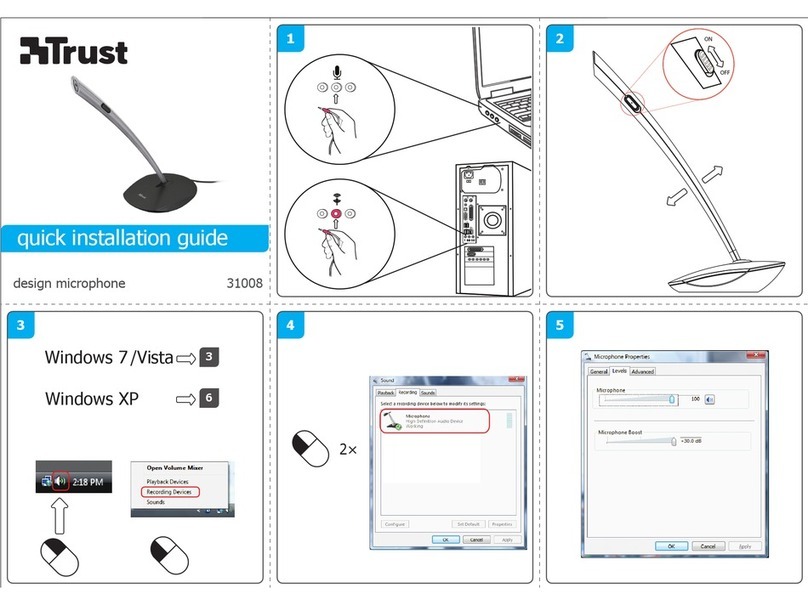
5
25A1090 (Rev.3)
network (D162) provides temperature compensation for changes in the VY, or "cut-in" voltage of
D190. After the compression threshold stage, the DC control signal is amplified by a 40 dB fixed-
gain stage (IC100-5). It is then sent to the VCA control voltage input (EC+).
Following the ARC™ processor section, the audio signal must pass through a muting network
consisting of R199, R200, C205, and Q205. A trim pot (TR200) allows the audio deviation level
to be set. Next, audio enters the tone key summing amp (IC150-4). Here, tone-key is added to
the audio before passing to the RF section for transmission. The tone key signal is used in the
receiver to provide audio output only when the tonekey signal is present with the transmitted sig-
nal; therefore, if the tone key or the transmitter is turned off, the receiver will be muted. The tone
key squelch will eliminate receiver noise associated with loss of the carrier, which usually sounds
like a "pop". The tone key signal is generated by a square wave from the mP (IC300). It is then
filtered by active filter stage Q185 and attenuated by R188/R189 (under µP control) before being
fed to the summing amplifier. The combined audio/tone-key signal is then sent to the VCO
through R504.
POWER SECTION
Two "AA" batteries supply power to the transmitter through FET Q410, which provides electri-
cal reverse battery protection. Next, power enters switching boost converter IC400, which sup-
plies regulated 5V power. To turn on the transmitter, SW325 shorts the base of Q480 to ground,
enabling the converter and powering up the unit. The microprocessor keeps Q480 disabled until
shutdown.
Power is turned off by a "shutdown" signal from the microprocessor, which can be initiated
manually by the user (by holding down SW325 for 2.2 seconds) or automatically by the system
(e.g.,whenthe batteryis tooweakfor properoperation).At this time, themicroprocessorenables
Q480 and shuts down the converter. When the unit is off, Q480 and its bias circuitry draw less
than 30 µA, so the effect on battery life is negligible. The converter and microprocessor are dis-
abled.
LOW BATTERY SHUT DOWN:
A software battery shutdown routine allows the battery supply to run down to 2.05 V before
shutdown, and will not turn the system back on until a voltage greater than 2.25 V is present. The
hysteresis keeps the system in a controlled state when the batteries are low, and also helps pre-
vent weak batteries from being used from the start.
RF CIRCUIT DESCRIPTION
RF SECTION
The system block diagram is shown above. The SLX2 uses a PLL system with direct carrier
frequency modulation. Processed audio enters the VCO through a passive "reflection" network
before being applied to the varactor diode (D500) through choke L503. The VCO is shielded to
prevent external RF fields from affecting its operation, and to help control radiated emissions of
its harmonics. Power for the VCO and PLL circuitry is supplied by the main 5 V regulator. Power
and signal lines in the VCO area are heavily decoupled and bypassed to remove noise.
The VCO has a tuning bandwidth of more than 30 MHz on all bands, with a tuning voltage
range of approximately 1 to 4 volts. The VCO employs separate stages for the oscillator (Q502)
and buffer (Q501) to minimize phase noise and load pulling. The VCO output is isolated by ca-
pacitive and resistive dividers, before being applied to the frequency control pin of the PLL syn-
thesizer (IC501) through C538. The synthesizer's internal circuitry divides the RF signal down as
necessary to achieve a tuning precision of 25 kHz. The synthesizer circuit contains a quartz-con-
trolled reference oscillator operating from a 16 MHz reference crystal (Y801) that is adjusted by
means of trimmer CV501. The transmitter output frequency is user selectable in groups of com-
patible channels within each of the eight available bands. Frequency selection is made via mi-
croprocessor controller IC300, which interfaces with the user by means of the Group and
Channel switches, SW324 and SW325. The output of the synthesizer is a series of pulses that
are integrated by a passive loop filter consisting of C532, R514, C533, R513, and C531 to pro-
duce the control voltage signal.
The VCO output is coupled to the RF buffer stage (Q600) by a matching network consisting
of R602, C614, and L610. R600 and R603 provide base bias for the transistor, while R605 sets
its operating current. RF choke L600 provides power and decoupling for the stage, in conjunction

